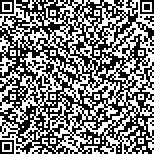罗翱,唐成林,黄思琴,赵丹丹,张安宁,吴梦佳,安荟羽,谭程方.推拿对骨骼肌急性钝挫伤模型大鼠炎症、氧化应激及细胞自噬相关因子的影响[J].中华物理医学与康复杂志,2018,40(6):407-413
扫码阅读全文

|
| 推拿对骨骼肌急性钝挫伤模型大鼠炎症、氧化应激及细胞自噬相关因子的影响 |
|
| |
| DOI: |
| 中文关键词: 推拿 骨骼肌钝挫伤 炎症 氧化应激 自噬 |
| 英文关键词: Massage Skeletal muscles Blunt injury Inflammation Oxidative stress Autophagy |
| 基金项目:国家自然科学基金项目(No.81273870) |
|
| 摘要点击次数: 5296 |
| 全文下载次数: 7349 |
| 中文摘要: |
| 目的 观察推拿对大鼠骨骼肌急性钝挫伤修复过程中炎症、氧化应激、细胞自噬相关因子的影响,探讨推拿治疗骨骼肌损伤可能的作用机制。 方法 采用随机数字表法将42只成年雄性Sprague-Dawley(SD)大鼠分为正常组(n=6)、模型组(n=18)、治疗组(n=18),模型组和治疗组再根据取材的时间点随机分为1d、7d、14d三个亚组(n=6)。模型组和治疗组用自备打击器建立腓肠肌急性钝挫伤模型,治疗组于造模48h后开始推拿治疗,每日1次,每次15min。各组分别于各自的取材时间点心脏采血后取损伤侧腓肠肌,苏木精-伊红染色(HE)观察损伤部位腓肠肌形态学变化;酶联免疫法(ELISA)检测各组大鼠血清肿瘤坏死因子α(TNF-α)、白细胞介素1β(IL-1β)、C反应蛋白(CRP)、前列腺素E2(PGE2)表达水平;紫外-可见分光光度法检测各组大鼠血清超氧化物歧化酶(SOD),丙二醛(MDA)含量;Western blotting检测各组大鼠腓肠肌自噬微管相关蛋白1轻链3(LC3)、Bcl-2同源结构域蛋白Beclin1、泛素结合蛋白P62表达水平。 结果 骨骼肌损伤修复过程中,HE染色显示,各时间点模型组较正常组细胞形态崩塌,肿胀明显,7d和14d亚组有成肌细胞核出现。各时间点治疗组较模型组恢复更好,新生肌细胞较多,形态更趋正常。ELISA结果显示,模型组各取材时间点较正常组同取材时间点血清促炎因子明显升高,但治疗组1d和7d组较模型组同取材时间点显著降低,差异有统计学意义(P<0.05)。紫外-可见分光光度法结果显示,模型组血清SOD和MDA含量较正常组明显升高,治疗组SOD较模型组同取材时间点显著升高,差异有统计学意义(P<0.05),MDA较模型组同取材时间点显著降低,差异有统计学意义(P<0.05)。Western blotting结果显示,模型组各取材时间点较正常组腓肠肌LC3(II/I)、Beclin1明显降低,P62明显升高,而治疗组较模型组同取材时间点LC3(II/I)、Beclin1显著升高,P62显著降低,差异均有统计学意义(P<0.05)。 结论 骨骼肌损伤后,其炎症及氧化应激水平明显升高,细胞自噬活性明显降低,通过推拿治疗能有效减轻机体炎症反应,降低其氧化应激损害,提高组织细胞自噬活性,从而加速受损组织的修复,这可能是推拿促进骨骼肌损伤修复的机制之一。 |
| 英文摘要: |
| Objective To observe the effects of massage on inflammation, oxidative stress and autophagy during the repair of acute contusion of skeletal muscles so as to explore its biological mechanisms. Methods Forty-two adult Sprague-Dawley rats were randomly divided into a control group (n=6), a model group (n=18), and a treatment group (n=18). Acute contusion of the gastrocnemius muscles of the rats in the model and treatment groups was inflicted using a home-made impactor. Beginning forty-eight hours later, 15 minutes of massage was administered daily for two weeks. After one, 7 and 14 days of the massage treatment, the injured gastrocnemius was resected from 6 rats of both the model and treatment groups. Morphological changes were observed using haematoxylin and eosin (HE) staining. The serum content of tumor necrosis factor alpha (TNF-α), interleukin1β (IL-1β), C reactive protein (CRP) and prostaglandin E2 (PGE2) were detected using enzyme-linked immunosorbent assay (ELISA). The serum content of superoxide (SOD) and malondialdehyde (MDA) were detected using spectrophotometry. The expression of microtubule-associated protein 1 light chain 3(LC3), Bcl-2 homeodomain protein Beclin1 and ubiquitin binding protein P62 were detected using Western blotting. Results The HE staining showed more significant collapse and swelling of cells in the model group than in the control group at each time point. New muscle cells were observed at days 7 and 14 in the model group. At each time point, significantly better recovery was observed in the treatment group compared to the model group, with more new muscle cells and better cell morphology. According to the ELISA results, a significant increase in serum pro-inflammatory factors occurred in the model group compared to the control group and compared to the treatment group after one day and 7 days of treatment. The average serum content of SOD and MDA in the model group was significantly higher than in the control group, while the average serum content of SOD in the treatment group was significantly higher than in the model group and that of MDA was significantly lower. Western blotting showed a significant decrease in LC3 (II/I) and Beclin1, as well as a significant increase in P62 in the model group at each time point compared with the treatment group and the controls. Conclusion Inflammation and oxidative stress increase significantly in a skeletal muscle after injury, but autophagy decreases significantly. Massage can effectively reduce the inflammatory response and oxidative stress and promote autophagy, which leads to quicker repair of skeletal muscles. |
|
查看全文
查看/发表评论 下载PDF阅读器 |
| 关闭 |
|
|
|